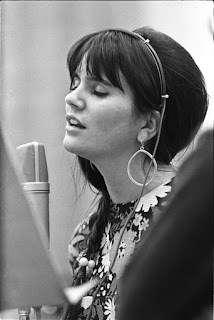 |
| Reservoir Dogs / Live Entertainment/Kobal/REX/Shutterstock |
(Tara Wood, USA, 2019, 103 minutes)
Instead of dancing around Quentin Tarantino's connection to disgraced movie mogul Harvey Weinstein, Tara Wood uses it to frame her documentary. There's no getting around it: Weinstein, by way of Miramax and The Weinstein Company, released Tarantino's first eight films. He and his brother, Bob, had nothing to do with Once Upon a Time … in Hollywood, which marks a new era for the filmmaker, though we aren't likely to get a QT8 II: The Next Eight, since Tarantino has claimed that he plans to retire after film #10, whatever it is and whenever it may materialize (all I know is that it won't be a Star Trek entry, since he's extricated himself from that particular commitment).
Former roommate Scott Spiegel (Evil Dead II) remembers meeting Tarantino in his video-store days. Spiegel thought he was "an overzealous geek"--with the talent to back it up. He came to that conclusion after reading the screenplays for True Romance (Tony Scott) and Natural Born Killers (Oliver Stone). Though Tarantino wanted to direct, studios weren't interested in handing the reins to an untested kid when these established gents were willing to step in, though producer Stacey Sher says that Tarantino would've shot True Romance in non-linear fashion, as he famously did in Pulp Fiction, and that--26-year-old spoiler alert--Christian Slater's Clarence wouldn't have survived the climactic gun battle.
 |
| True Romance crew feat. Baby Brad / Warner Bros |
Using the residuals from his gig as an Elvis impersonator on The Golden Girls ("Sophia's Wedding"), Tarantino was able to scratch up the funds to shoot Reservoir Dogs. As far as I'm concerned, that's an origin story to rival anything in Marvel or DC comics. That said, he didn't have the budget to provide his actors with the black suits they needed to make the imposing impression that has come to characterize the film, so they had to provide their own. According to Michael Madsen, who played Mr. Blonde, the production supplied them with ties. From those humble beginnings, Tarantino's debut went on to play Cannes, and a career was born.
Wood proceeds through Tarantino's next seven films, organized by three chapters: The Revolution (1992 and 1994), Badass Women and Genre Play (1997, 2003-2004, and 2007), and Justice (2009, 2012, and 2015).
 |
| Forster and Tarantino in 2007 / Moviestore/REX/Shutterstock |
It's a swell lineup, but I still would've liked to hear from Harvey Keitel, whose participation helped to make Reservoir Dogs possible, and Uma Thurman, who may feel she's said her piece. Though she claims she'd work with Tarantino again, in 2018, she told The New York Times he endangered her during the making of Kill Bill by having her do a stunt that went wrong, causing permanent injuries. Wood recounts the incident, and there's mention of a cover-up on Weinstein's part, but no explanation as to what that means. About Thurman's very physical role, stunt double Bell notes, "Uma worked her ass off… She was in pain a lot of the time."
 |
| Thurman as The Bride in Kill Bill / The Weinstein Company |
Austin Chronicle editor and co-founder Louis Black also praises the music in Tarantino's films, an essential element in their success, but he doesn't name Mary Ramos, the music supervisor who has worked on all eight films. It's an unfortunate oversight, but then Wood chose not to interview Tarantino (or maybe he preferred to let others speak for him). I'm pretty sure he would have given his longtime colleague her due.
Fortunately, Wood does make sure to credit Sally Menke, the Thelma Schoonmaker to Tarantino's Scorsese, though she neglects to say when and how she died: of heat-related causes in 2010. Django Unchained, which saw release two years later, represents the last film she edited.
Further, there's talk about race, something Tarantino has tackled through films in which people of color don't just take the lead—they triumph over their (mostly white) oppressors. Tarantino's use of the "n" word, however, complicates his attempts to uplift marginalized people. He and Spike Lee have been sparring about it for over 20 years, and it's an issue that will never go away, not when the word appears, repeatedly, in several films. If Foxx and Jackson, who has worked with Lee, don't have a problem with it--"Spike Lee’s that guy," Foxx quips, going on to characterize him as a "get off my lawn"-type--that doesn't mean it isn't a problem. Nor does it mean Tarantino is a racist, but it's a cruel, ugly, dehumanizing word. Putting it in the mouths of bad guys doesn't change that fact. Even in the context of the exploitation-style films he makes, it's tone-deaf at best.
 |
| Jamie Foxx is Django Unchained / The Weinstein Company |
Just as the documentary opens with Reservoir Dogs, it ends with The Hateful Eight, in which Tarantino reunited again with Tim Roth and Michael Madsen (both also appear in OUATIH). As for Weinstein, his relationship with Tarantino unraveled after The New Yorker and The New York Times published revelations about his career-long history of sexual harassment. All the while, the director made Weinstein money. In turn, Weinstein offered him creative freedom. Stacey Sher confirms that Tarantino based Kurt Russell's bounty hunter in The Hateful Eight on Weinstein. In the end, and this isn't exactly a spoiler: Jennifer Jason Leigh's outlaw, Daisy, shoots him dead. It doesn't change the fact that Weinstein's name will always be associated with these films, but as Oedipal endings go: it's perfect.
QT8: The First Eight is available to rent or buy (no streaming) from Amazon Prime Video, iTunes, Microsoft, Vudu, YouTube, and Google Play.



























